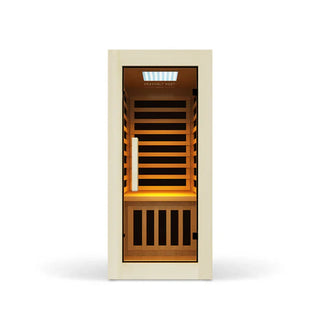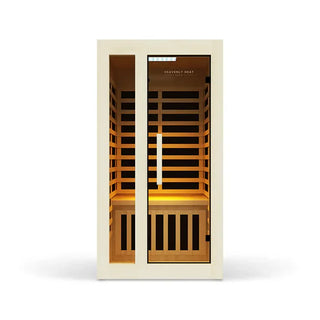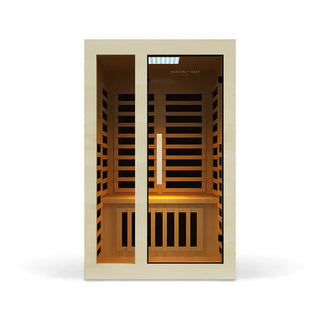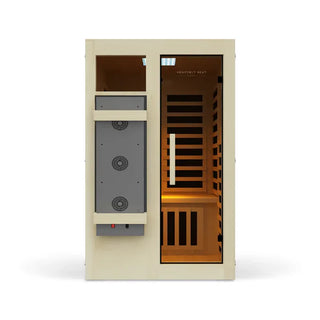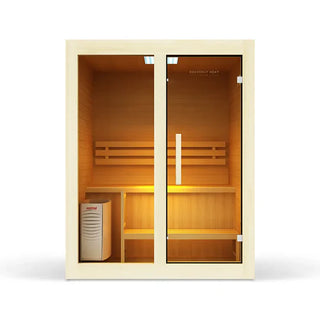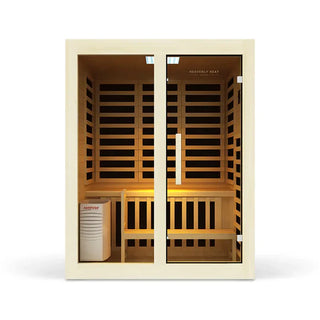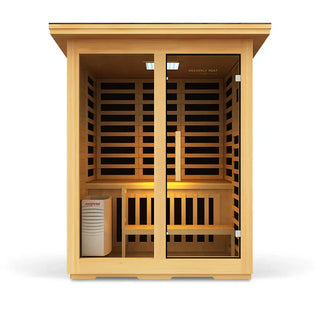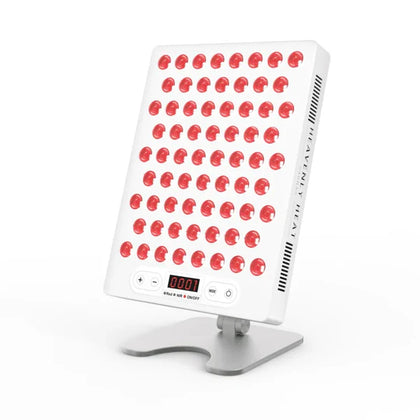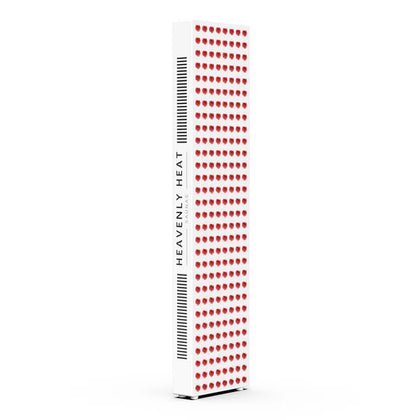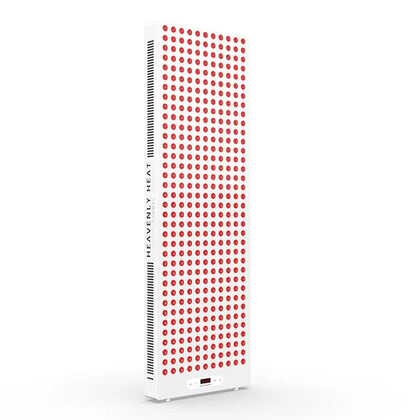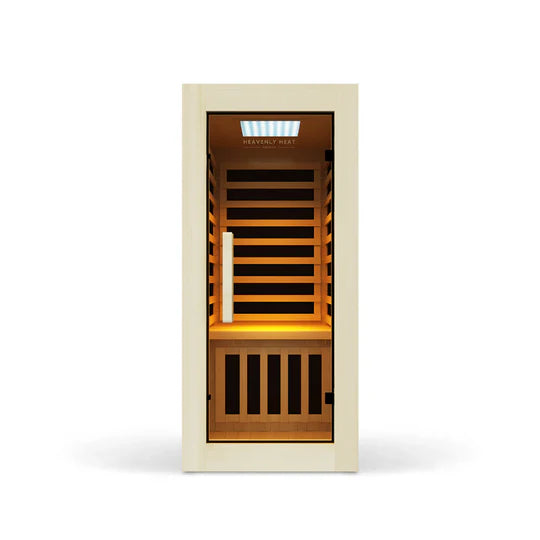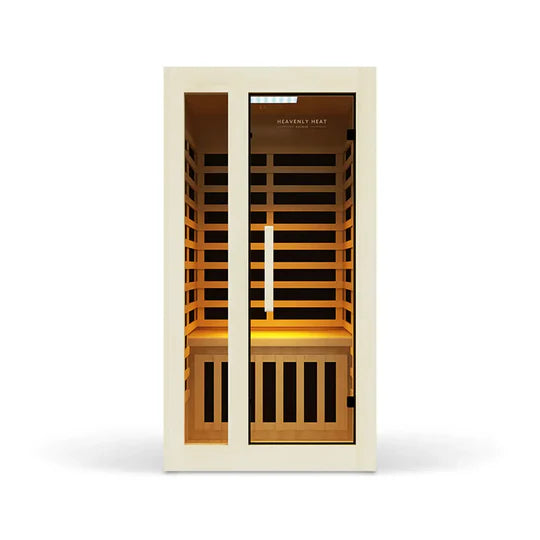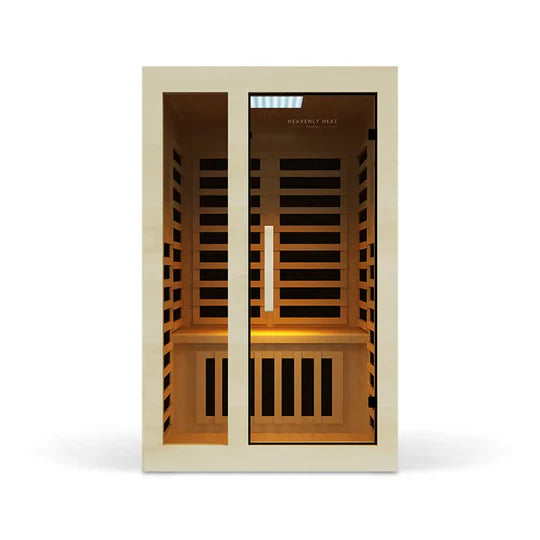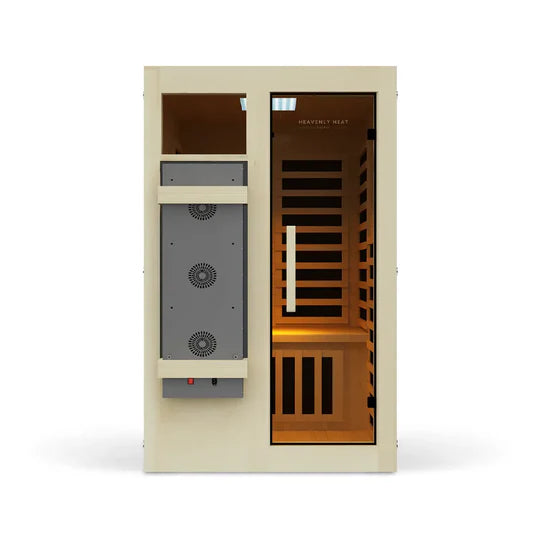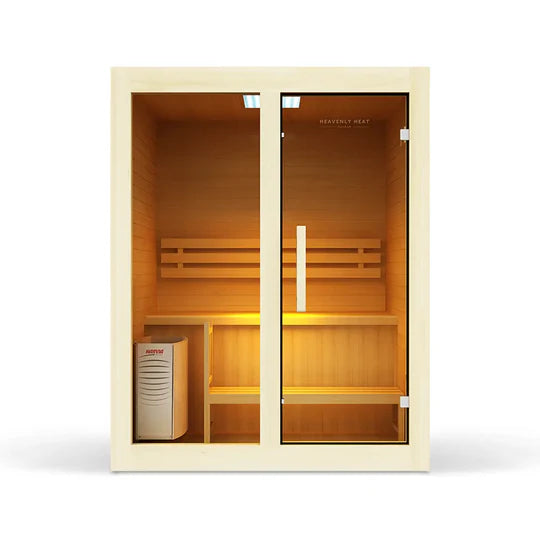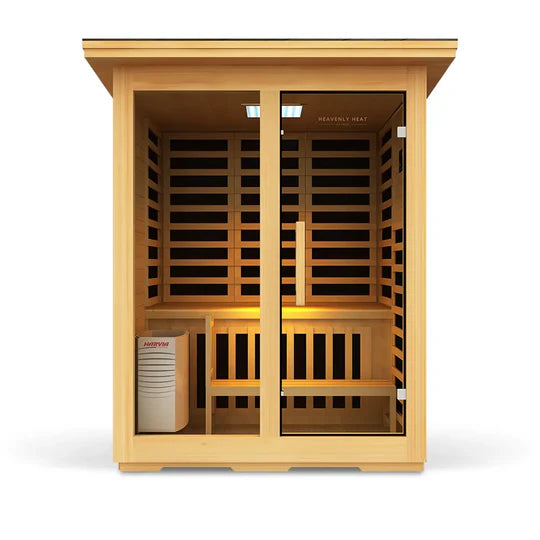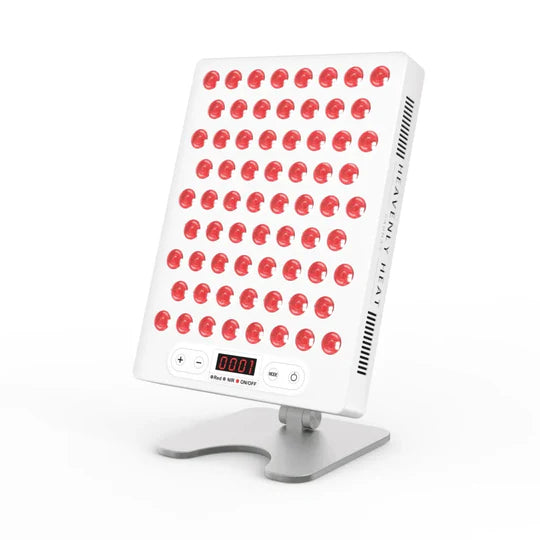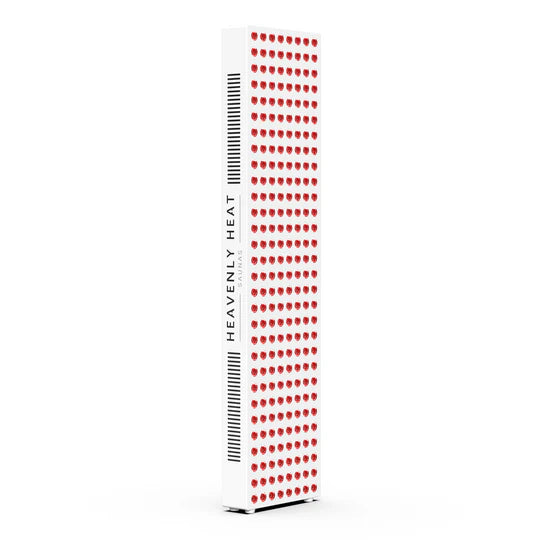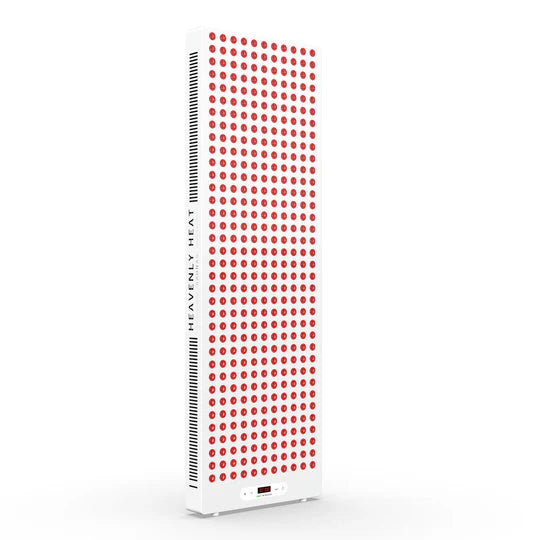When Can You Use a Sauna After Surgery? Recovery Guidelines

Table of contents
Recovering from surgery can be frustrating, and the idea of unwinding in a sauna is tempting.
But using one too soon can lead to swelling, delayed healing, or even infection. So, when is it actually safe?
In this post, we’ll explore expert recommendations to ensure a smooth and risk-free recovery.

Key Takeaways
-
Wait Until Fully Healed: Using a sauna too soon after surgery can increase swelling, infection risk, and slow recovery.
-
Certain Surgeries Require Extra Caution: Procedures like heart bypass, spinal surgery, and facelifts need longer recovery before sauna use.
-
Heat Can Affect Medications: Some post-surgery medications, like blood thinners and pain relievers, may react negatively to sauna heat.
-
Infrared Saunas May Be Safer: Lower temperatures in infrared saunas reduce the risk of overheating compared to traditional saunas.
- Always Check with Your Doctor: Everyone heals differently, so consult your doctor before resuming sauna sessions.
Which Surgeries Make Sauna Use Unsafe?
- Heat after heart surgery can suddenly drop your blood pressure: If you’ve had heart surgery like a bypass, the sauna’s heat can widen blood vessels too much, causing your blood pressure to fall dangerously low.
- Spinal surgery and sauna heat don’t go well together: After spine-related surgeries, heat may cause swelling that presses on nerves, slowing your recovery and possibly making pain worse.
- Your energy levels after surgery may not handle heat well: Even if your cuts have healed, your body might still be weak. Using a sauna too early can drain your limited energy during recovery.
- Heat and sweat can reopen belly surgery wounds: For abdominal surgeries like C-sections, the extra blood flow and sweating from sauna use can cause stitches to weaken or wounds to reopen.
- Facial surgery areas swell more in the sauna: After a facelift or similar procedure, sauna heat can increase swelling and disrupt the healing of delicate skin and sutures.
- Swelling and blood clot risks are higher after joint surgeries: If you've had a knee or hip replacement, sauna heat can worsen swelling and may even raise the risk of blood clots in the healing area.
- Surgeries that affect circulation or nerves need more healing time before sauna use: If your surgery involved deep tissues, nerves, or blood flow, your body needs extra time to recover before it’s safe to handle the heat of a sauna. Always talk to your doctor first.
Risks of Using a Sauna Too Soon After Surgery
Increased Risk of Infection
Heat weakens wound protection: High temperatures cause sweating, breaking down the skin’s natural barrier and slowing healing.
Moisture increases infection risk: Saunas and hot tubs trap moisture, softening the skin and making it easier for bacteria to enter.
Stitches may become less secure: Prolonged heat exposure can weaken sutures, increasing the risk of wounds reopening.
Recovery may take longer: If an incision reopens due to heat, it can delay healing and prolong the recovery process.
Delayed Healing and Poor Wound Closure
Heat exposure affects how well your body heals after surgery. High temperatures cause sweating, which can weaken the protective barrier around wounds and slow the healing process.
Saunas and other intense heat sources, like hot tubs, can trap moisture and soften the skin, making stitches less secure and increasing the risk of infection or reopening.
If stitches or incisions are exposed to too much heat, they might reopen, prolonging recovery.
Excessive Bleeding and Swelling
After surgery, your blood vessels are still healing, and heat can cause them to expand, increasing the risk of bleeding.
If you step into a sauna too soon, the warmth may make post-surgical swelling worse by encouraging fluid retention.
Cardiovascular Strain
- Heat makes your heart pump harder than usual: High sauna temperatures force your heart to work more, which adds extra pressure during recovery.
- After surgery, your heart can't handle that pressure well: If you’re still healing, especially from anesthesia, this extra workload can be risky for your heart.
- Feeling dizzy or lightheaded means your heart is under stress: These are signs your body is struggling with the heat, and you shouldn’t ignore them.
- Heart benefits from sauna come later, not during recovery: While sauna use may help the heart in the long run, it’s not safe right after surgery when your heart is still healing.
Dehydration and Electrolyte Imbalance
- Sweating causes loss of body fluids after surgery: Sauna heat makes you sweat a lot, which quickly drains water from your body. After surgery, this fluid loss is risky because your body needs water to heal properly.
- Dehydration slows down healing and increases pain: When you don’t have enough fluids, your wounds take longer to heal. Your muscles and joints may also become stiff, making pain worse and recovery harder.
- Losing electrolytes can make you dizzy and tired: Sweat removes important salts and minerals (electrolytes) from your body. Without these, you might feel weak, dizzy, or very tired, which is unsafe after surgery.
- Drinking electrolyte drinks helps keep your body balanced: Replacing lost fluids with water and drinks like coconut water or electrolyte solutions keeps you hydrated and helps your body recover faster.

Medication Complications
Many post-surgery medications interact poorly with heat exposure. Opioids, commonly prescribed for pain relief, can cause dizziness and low blood pressure, which may be worsened in a sauna. Blood thinners increase the risk of excessive bleeding when blood vessels dilate from heat. Certain antibiotics can also interfere with the body’s ability to handle heat, making dehydration more likely and potentially affecting how well the medication works.
Increased Risk of Dizziness and Fainting
- Sauna can cause blood pressure to drop fast, leading to dizziness: Sauna use affects blood flow and can make blood pressure fall quickly, which can cause dizziness or fainting, especially after surgery.
- Surgery weakens the body’s ability to handle heat safely: After surgery, the body may not control temperature well, making it easier to feel lightheaded in a hot sauna.
- Low iron or anemia makes overheating more likely and more dangerous: People with low iron or anemia don’t adjust to heat properly, so they can overheat without realizing it and feel dizzy or pass out.
When Can You Safely Return to the Sauna?
Returning to the sauna too soon after surgery can feel tempting, but waiting for proper healing is crucial.
Surprisingly, some research suggests earlier exposure to warmth and moisture may not be as harmful as once thought.
A meta-analysis of eleven clinical trials with nearly three thousand patients found that earlier bathing did not increase the risk of wound infection or complications.
In fact, patients who bathed earlier reported higher satisfaction, while those who delayed bathing had a higher risk of hematomas.
For example, a meta-analysis reviewed eleven clinical trials with nearly three thousand patients and found that earlier bathing did not increase the risk of wound infection or complications like redness and swelling.
In fact, patients who bathed earlier reported higher satisfaction, while those who delayed bathing had a higher risk of hematomas.
According to this research, exposure to warmth—when done at the right time—may not be as risky as commonly believed.
However, since individual healing varies, it’s always best to check with your doctor before easing back into sauna sessions.
Infrared vs. Traditional Saunas: Which One Is Safer?
Infrared saunas are often considered a safer choice after surgery because they operate at lower temperatures, reducing the risk of overheating or discomfort.
Traditional saunas, with their intense heat, can increase dehydration and put more strain on the heart, which might lead to complications during recovery.
Sauna, Steam Room, or Hot Bath: Which Is Best After Surgery?
A sauna, steam room, or hot bath may seem relaxing after surgery, but each carries risks.
A steam room keeps the air humid, which may slow wound healing, while a sauna’s dry heat can dehydrate you faster.
Hot baths pose the highest risk, as soaking can introduce bacteria to healing incisions, leading to infections.
Does Sauna Interfere with Medications?
Saunas can change how some medications work, making them stronger or weaker. Heat increases blood flow, which can cause medications to absorb faster, leading to unexpected effects.
This increased circulation can also impact healing scars, making them more prone to darkening if they are not properly protected from heat and sun exposure.
Does a Sauna Affect Scars and Stitches?
- Using a sauna too soon can make your stitches worse: Sauna heat might feel good, but if your wound is still fresh, the high temperature can make the area more sensitive and slow down the healing process.
- Heat from the sauna can weaken healing skin: Newly formed tissue is delicate, and the heat from a sauna can cause irritation or damage before it's fully healed.
- One study says sauna might not delay healing: Researchers studied 79 people after hernia surgery. Some used the sauna just 3 days later, others waited until stitches were removed.
- Healing was the same for both groups in the study: The results showed no major difference in healing between early sauna users and those who waited, suggesting sauna might not be as harmful as people think.
- Everyone heals differently, so check with your doctor first: Even though the study sounds reassuring, your body might react differently. It’s always safest to ask your doctor before using a sauna after surgery.

Safety Tips for Using a Sauna During Recovery
Stay Hydrated
- Drinking water before sauna helps you stay safe: Having 16–20 ounces of water before your sauna session keeps you from getting dehydrated and helps your body handle the heat better.
- Drinking alcohol before sauna dries your body faster: Alcohol takes water out of your system and makes the sauna less helpful for your recovery, so it's best to skip it.
- Replacing lost fluids after sauna keeps you energized: After your session, drinking water or something with electrolytes (like tomato juice) helps refill what your body lost and keeps your energy up.
- Natural drinks like coconut water help more than sports drinks: Coconut water and dairy give your body the right kind of natural electrolytes, which support better hydration and faster recovery than many store-bought sports drinks.
Limit Your Session Time
Short sauna sessions are best when recovering. Aim for 10–15 minutes initially, adjusting as needed.
Overstaying can lead to dehydration, dizziness, or excessive fatigue, potentially slowing recovery.
Monitor Your Body’s Response
Your body will give signs if it’s not handling the heat well. Dizziness, nausea, rapid heartbeat, or excessive sweating are early warnings of overheating.
A fitness tracker with temperature and heart rate monitoring can help you stay aware of these signals, giving real-time insights into how your body is responding to the heat. This makes it easier to know when to take a break and stay safe.
Avoid Alcohol and Stimulants
- Drinking alcohol makes your body struggle in the heat: Drinking before or after a sauna session dries out your body, messes with your blood flow, and makes it harder to control your temperature, making you more likely to feel dizzy or overheated, especially during recovery.
- Mixing alcohol with caffeine confuses your body even more: Caffeine might make you feel awake, but it doesn’t cancel out alcohol. This false sense of alertness can lead you to drink more than you should, which makes dehydration and overheating worse in the sauna.
- Going into the sauna too soon after drinking is risky: Your body needs time to clear the alcohol. On average, it takes one to two hours per drink, depending on your weight, age, and other factors. Stepping into the heat before that can put unnecessary stress on your recovering body.
Cool Down Properly
After a sauna session, a proper cooldown phase helps your body transition back to normal temperature.
Take at least 10 minutes to let your body adjust, sit in a cooler room, use a refreshing cold eucalyptus towel, drink water to rehydrate, or take a lukewarm shower.
Letting your body cool gradually not only feels invigorating but also helps prevent dizziness or excessive fatigue, ensuring you step out feeling your best.
Adjust Temperature as Needed
Sauna temperature should match your body’s tolerance level during recovery. Start with a lower setting, around 100–120°F, and gradually increase it if comfortable.
Consult Your Doctor if Necessary
If you’ve had surgery or have a medical condition, consult your doctor before using a sauna.
Conditions like heart disease, high blood pressure, or recent surgical wounds may require specific precautions.
Warning Signs: When to Avoid the Sauna?
Excessive Sweating and Signs of Dehydration
The first signs include dry mouth, dizziness, and a headache. If your skin stops sweating or feels unusually dry, that’s a red flag.
As your body struggles to cool down, you may start feeling weak, nauseous, or disoriented.
In more severe cases, confusion or even convulsions can set in, signaling dangerous overheating.
Dizziness, Lightheadedness, or Fainting Sensations
- Feeling dizzy means your body is warning you: If you start to feel dizzy, lightheaded, or like you're floating while in the sauna, it's your body telling you something’s wrong. Don’t ignore it, get out immediately.
- Weakness or nausea is a sign to leave right away: Sudden feelings of weakness or nausea in the sauna are serious signs your body can’t handle the heat. It’s safer to stop and cool down than push through.
- Low blood pressure makes dizziness more dangerous: If you already have low blood pressure, you're more likely to feel faint in the sauna. That combination can increase your risk of passing out.
- Heat exhaustion can knock you unconscious: Staying too long in the heat can cause heat exhaustion, which often starts with dizziness and can lead to fainting. Don’t wait until it gets worse.
- Slow breathing can help, but only for mild symptoms: If you feel just a little lightheaded, slow and deep breathing may help stabilize you. But if symptoms continue, don’t try to tough it out.
- Sit down, drink water, and take a break if you feel off: When dizziness hits, stop what you’re doing. Sit down, hydrate, and give your body time to recover before doing anything else.
- People with circulation problems should be extra careful: If you know you have blood pressure or circulation issues, limit your sauna time. Always listen to your body and don’t take chances with your health.
Rapid or Irregular Heartbeat
If your heartbeat feels unusually fast or irregular, take it as a warning. People with arrhythmias or heart conditions should exercise caution, especially those with unstable angina, recent heart attacks, or severe aortic stenosis, as the heat can put extra strain on the heart. Pay attention to how you feel, and don’t ignore any discomfort.
Shortness of Breath or Difficulty Breathing
Struggling to breathe in a sauna isn’t just uncomfortable—it can be dangerous. High temperatures can make the air feel thick and oppressive.
Persistent Nausea or Vomiting
Nausea is a clear indicator that your body is overheating. The combination of intense heat and dehydration can upset your body’s balance.
Unusual Skin Reactions or Irritation
If your skin starts itching, turning red, or breaking out in a rash, it may be a sign that your body is not tolerating the heat well. Avoiding sauna use until your skin fully heals is recommended.
Feeling Weak, Fatigued, or Overheated
- Feeling extremely tired after sauna means something’s wrong: It’s normal to feel a bit tired after a sauna, but if you’re feeling very weak, sluggish, or mentally foggy, your body might be reacting badly. This isn’t just tiredness, it could be a warning sign.
- Losing too much water makes you feel worse: Dehydration is a common reason for feeling weak and drained after a sauna. When your body loses too much water, it can’t cool itself properly, and you end up feeling worse instead of better.
- Getting too hot can leave you completely exhausted: If your body overheats during the sauna, it can wipe out your energy. Instead of feeling relaxed, you might end up feeling heavy, dizzy, or out of breath, clear signs that you’ve gone too far.
- Dizziness, heavy sweating, or nausea mean it’s time to stop: If you feel lightheaded, start sweating too much, or feel like vomiting, your body is telling you to get out. These are signs of heat exhaustion, and staying in the sauna can make it worse.
- Leaving the sauna when your body asks is the smart move: To stay safe, drink water before and after your session. If you feel weak, don’t push through, sit, breathe, and leave the sauna if needed. Paying attention to how you feel is the best way to enjoy the experience without risk.
Why Staying Hydrated Matters After Surgery?
- Drinking water helps your body heal faster: After surgery, your body needs extra support to recover, and drinking enough water helps carry important nutrients to the places that need to heal. It’s a simple way to speed up your recovery.
- Without enough water, healing takes longer: If you don’t stay hydrated, your body struggles to repair itself. This can slow down how fast your wounds heal and increase swelling in the healing areas.
- Not drinking enough water can make problems worse: Dehydration after surgery can cause dizziness, constipation, and even infections. These issues make recovery harder and more uncomfortable.
- Your body works better when you drink enough water: Most people need about 8–10 glasses of water a day after surgery. This helps your body stay balanced and do its job properly while you recover.
- Water helps reduce swelling and brings your energy back: Staying hydrated can lower inflammation, help you feel better sooner, and give your body the energy it needs to get back to normal more quickly.
FAQs
How Does Sauna Use Impact Swelling and Inflammation After Surgery?
Sauna heat can increase post-surgical swelling if used too soon by expanding blood vessels and drawing fluid to healing tissues. Once swelling subsides, sauna sessions may aid recovery by improving circulation and reducing inflammation. Infrared saunas penetrate deeper into tissues, potentially easing internal inflammation with less intense heat. While sweating removes toxins, improper hydration can cause fluid retention. Heat exposure may speed healing but can worsen swelling in sensitive areas. Consult your doctor before use.
Are There Any Specific Post-Surgical Conditions That Benefit from Sauna Use?
Sauna use after orthopedic surgery can improve circulation, ease joint stiffness, and support lymphatic drainage to reduce swelling. Heat promotes relaxation, better sleep, and may aid scar tissue healing by boosting collagen production. Improved blood flow can accelerate minor incision healing and support nerve recovery. Always consult your doctor first.
What Are the Best Precautions to Take When First Returning to a Sauna Post-Surgery?
After surgery, consult your doctor before using a sauna. Premature use can slow healing, increase infection risk, and irritate stitches or scars. Start with a lower temperature and limit sessions to 5–10 minutes. Never go alone in case of dizziness or weakness. Gradually extend sessions as your body adjusts. Stay hydrated and listen to your body for a safe recovery.
How Does Sauna Affect Circulation and Blood Pressure After Surgery?
Sauna heat widens blood vessels, boosting circulation. After surgery, this can raise blood pressure, cause dizziness, or strain the heart. People with hypertension should be cautious, as heat may trigger spikes. While improved circulation aids healing, excessive heat can cause swelling or complications. Infrared saunas are gentler, but doctor approval is essential. Using a sauna too soon may hinder recovery.


